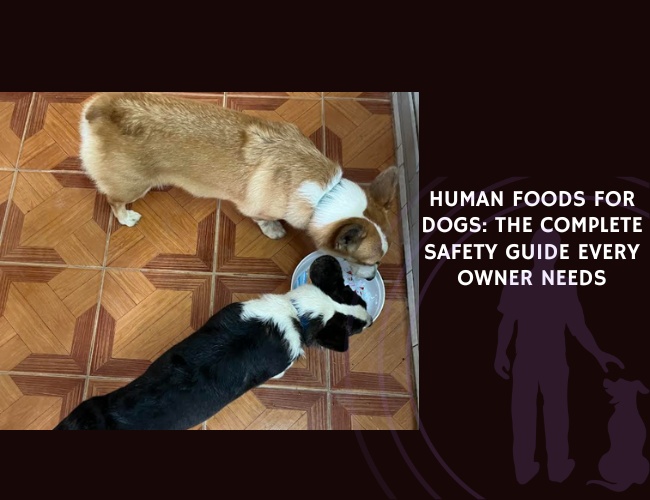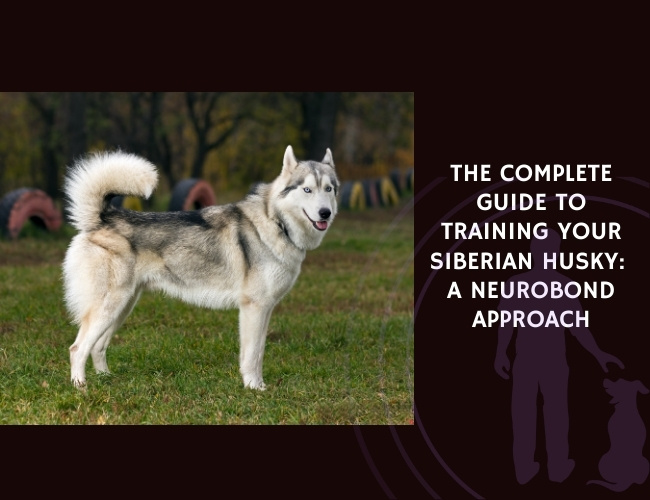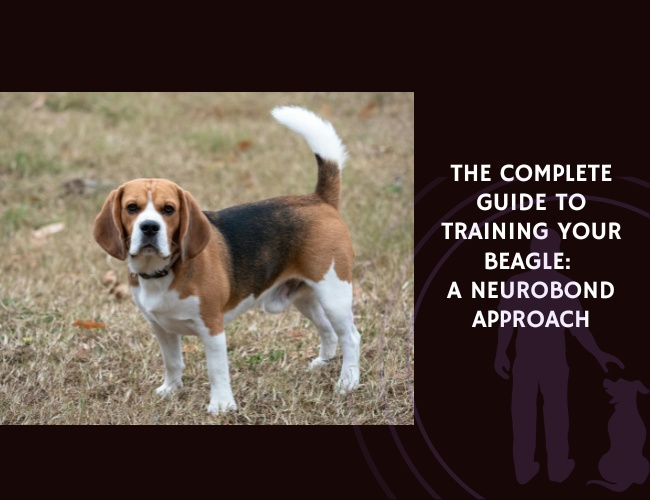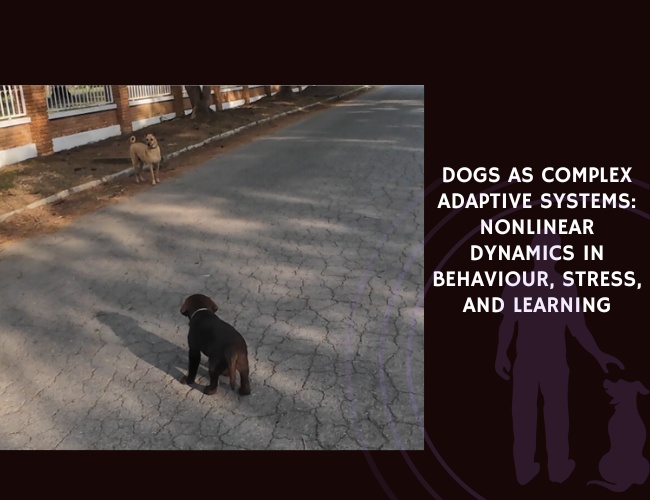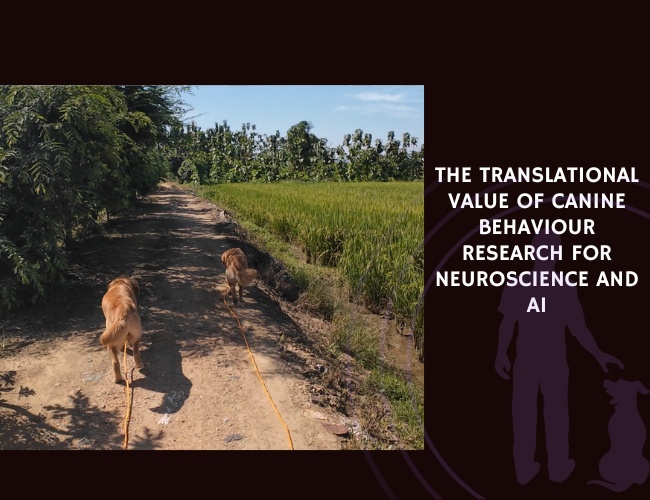Your furry friend’s pleading eyes at dinnertime tell a story we all know too well. That gentle paw on your knee, the focused attention on every bite you take—dogs have mastered the art of making us want to share our meals. But behind those irresistible expressions lies a critical question every responsible pet parent must answer: which human foods can actually cross the species divide safely?
Let us guide you through the complex world of canine nutrition and human food safety, where understanding the difference between a harmless treat and a potential emergency could save your dog’s life. From the molecular mechanisms that make chocolate dangerous to the surprising benefits of certain fruits and vegetables, we’ll explore everything you need to know about sharing (or not sharing) your plate with your four-legged companion.
Understanding Your Dog’s Unique Digestive System
How Dogs Process Human Food Differently
Your dog’s digestive system, while similar to ours in many ways, operates on fundamentally different principles that affect how they process human foods. Dogs have evolved as opportunistic carnivores with shorter digestive tracts than humans, meaning they process foods more quickly but with different enzymatic capabilities. This evolutionary adaptation explains why certain foods that nourish us can harm them.
The enzyme gap plays a crucial role here. Dogs lack specific enzymes that humans possess, particularly those needed to break down certain compounds like theobromine in chocolate. Their liver processes toxins differently too—what might give you a mild headache could trigger organ failure in your canine companion. Understanding these biological differences isn’t just interesting science; it’s essential knowledge that shapes every food decision you make for your pet.
Metabolic rate variations between humans and dogs also influence food safety. Dogs metabolize certain substances much more slowly than we do, allowing toxic compounds to accumulate to dangerous levels. For instance, the methylxanthines in chocolate remain in a dog’s system up to twice as long as in humans, amplifying their toxic effects. This slower clearance rate means even small amounts of certain foods can build up to harmful concentrations over time.
The Gut-Brain Connection in Dogs
Did you know your dog’s digestive health directly impacts their behavior and mood? The canine gut-brain axis, much like our own, creates a bidirectional communication highway between the digestive system and the brain. When dogs consume inappropriate human foods, the resulting digestive distress doesn’t just cause physical discomfort—it can trigger anxiety, irritability, and even aggression.
Oxidative stress from toxic substances consumed through human food can affect your dog’s neurological function, potentially leading to behavioral changes you might not immediately connect to diet. Foods high in preservatives, artificial colors, or excessive sugars can disrupt the delicate balance of gut bacteria, influencing everything from your dog’s energy levels to their ability to learn new commands. This connection underscores why maintaining proper nutrition isn’t just about physical health—it’s about supporting your dog’s emotional wellbeing too 🧡
Critical Toxic Foods: The Danger List Every Owner Must Know
Chocolate: The Most Common Canine Poison
Chocolate toxicity represents the most frequent food-related emergency in veterinary clinics, particularly during holidays when these treats abound in our homes. The danger lies in methylxanthines—specifically theobromine and caffeine—compounds that stimulate the central nervous system and cause cardiac hyperactivity in dogs. While humans efficiently metabolize these substances, dogs process them at a dangerously slow rate.
Understanding chocolate toxicity levels requires knowing that darker chocolate poses greater risks. Baking chocolate contains approximately 450mg of theobromine per ounce, while milk chocolate contains only 44-58mg per ounce. This means a small 20-pound dog could experience severe symptoms from just one ounce of baking chocolate, while the same dog might tolerate small amounts of milk chocolate (though any amount should be avoided).
Clinical progression of chocolate poisoning typically follows a predictable pattern:
- Within 2-4 hours: Vomiting and diarrhea appear
- 4-6 hours: Increased heart rate, restlessness, excessive panting
- 6-12 hours: Muscle tremors, hyperactivity, increased urination
- Severe cases: Seizures, cardiac arrhythmias, potential death
The prognosis generally remains positive with prompt veterinary intervention, though dogs experiencing seizures face more guarded outcomes. Time is critical—if you suspect chocolate ingestion, don’t wait for symptoms to appear before seeking help.
Grapes and Raisins: The Mystery Toxin
Perhaps no food toxicity puzzles veterinarians more than grape and raisin poisoning. Despite extensive research, the exact toxic component remains unidentified, making this fruit particularly dangerous because we cannot predict which dogs will react severely and which might escape unharmed. This unpredictability means every grape or raisin ingestion should be treated as a potential emergency.
The kidney connection defines grape toxicity’s danger. Unlike many food toxins that affect multiple systems, grapes and raisins specifically target the kidneys, potentially causing acute renal failure within 24-72 hours of ingestion. What makes this especially concerning is that the toxic dose varies wildly—some dogs have developed kidney failure from just a handful of grapes, while others have consumed larger amounts without apparent effect.
Warning signs to watch for include:
- Vomiting (usually within 24 hours)
- Lethargy and weakness
- Decreased or absent urination
- Abdominal pain
- Dehydration despite drinking water
Interestingly, while whole grapes and raisins pose serious risks, grape seed extracts used in some supplements don’t carry the same dangers, suggesting the toxic component lies elsewhere in the fruit. This distinction highlights how processing and preparation can dramatically alter a food’s safety profile for dogs.
Xylitol: The Hidden Sweetener Threat
Xylitol represents a growing danger in modern households as this sugar substitute appears in an expanding array of products—from sugar-free gum to peanut butter to baked goods. For dogs, xylitol triggers a rapid, massive insulin release that can cause life-threatening hypoglycemia within 30 minutes of ingestion. At higher doses, it also causes severe liver damage.
The insulin spike mechanism occurs because dogs’ bodies mistakenly recognize xylitol as regular sugar, releasing insulin to process it. However, xylitol doesn’t provide the glucose that insulin expects to find, causing blood sugar to plummet dangerously. A dog consuming as little as 0.1 grams of xylitol per kilogram of body weight can experience hypoglycemia, while doses above 0.5 grams per kilogram may cause acute liver failure.
You might notice your dog showing these symptoms after xylitol exposure:
- Vomiting
- Loss of coordination
- Lethargy or collapse
- Seizures
- Jaundice (in cases of liver damage)
Treatment requires immediate glucose supplementation and intensive monitoring. Even with prompt treatment, dogs who develop liver failure face a guarded prognosis. This emphasizes why prevention—carefully checking labels and keeping xylitol-containing products secured—remains your best defense.
The Allium Family: Slow-Acting Dangers
Onions, garlic, leeks, and chives—members of the Allium family—present a unique danger because their effects often don’t appear immediately. These foods damage red blood cells through oxidative injury, leading to hemolytic anemia that might not become apparent for several days after ingestion. This delayed reaction can make diagnosis challenging if owners don’t remember or realize their dog consumed these foods.
The compound responsible, N-propyl disulfide, damages the red blood cells’ ability to carry oxygen effectively. Dogs lack sufficient amounts of certain protective enzymes that help humans tolerate these foods, making them particularly vulnerable. Even small, repeated exposures can accumulate, causing chronic low-level anemia that might manifest as weakness, exercise intolerance, or pale gums.
Garlic poses particular confusion because some sources tout its benefits while others warn of dangers. The truth lies in dosage—while massive doses are clearly toxic, the small amounts in some commercial dog foods or supplements are generally considered safe. However, the margin between beneficial and harmful remains narrow enough that most veterinarians recommend avoiding garlic altogether.
Other Hazardous Foods to Avoid
Beyond the major toxins, several other human foods warrant caution:
Macadamia nuts cause temporary but distressing symptoms including weakness, hyperthermia, and tremors. While rarely fatal, affected dogs experience significant discomfort for 12-48 hours.
Alcohol affects dogs more severely than humans due to their smaller size and different metabolism. Even small amounts can cause dangerous drops in blood sugar, blood pressure, and body temperature.
Avocado contains persin, which can cause vomiting and diarrhea in dogs. While not as toxic as once believed, the high fat content alone makes avocados inappropriate for most dogs.
Raw potatoes, especially green ones, contain solanine, a glycoalkaloid poison that can cause gastrointestinal upset and neurological symptoms. Cooking destroys most solanine, making cooked potatoes generally safe in moderation.
Safe Human Foods: Beneficial Additions to Your Dog’s Diet
Lean Proteins: Building Blocks of Health
Lean meats offer exceptional nutritional value for dogs, providing essential amino acids in highly digestible forms that support muscle maintenance, immune function, and overall vitality. When prepared properly—cooked without seasonings, oils, or dangerous additions like onions—chicken, turkey, lean beef, and fish can supplement your dog’s regular diet beautifully.
Preparation matters significantly when sharing meat with your dog. Remove all bones, which can splinter and cause choking or intestinal damage. Cook thoroughly to eliminate harmful bacteria like Salmonella or E. coli that dogs, despite their reputation for iron stomachs, can still fall victim to. Trim visible fat to prevent pancreatitis, especially in dogs prone to this painful condition.
Fish deserves special attention as an protein source rich in omega-3 fatty acids. Salmon, sardines, and anchovies provide EPA and DHA, supporting cognitive function, reducing inflammation, and promoting healthy skin and coat. However, always cook fish thoroughly and remove all bones—raw fish can harbor parasites, and fish bones pose serious hazards.
Consider portioning proteins appropriately: treats and supplements should comprise no more than 10% of your dog’s daily caloric intake. This ensures you’re enhancing, not unbalancing, their nutrition.
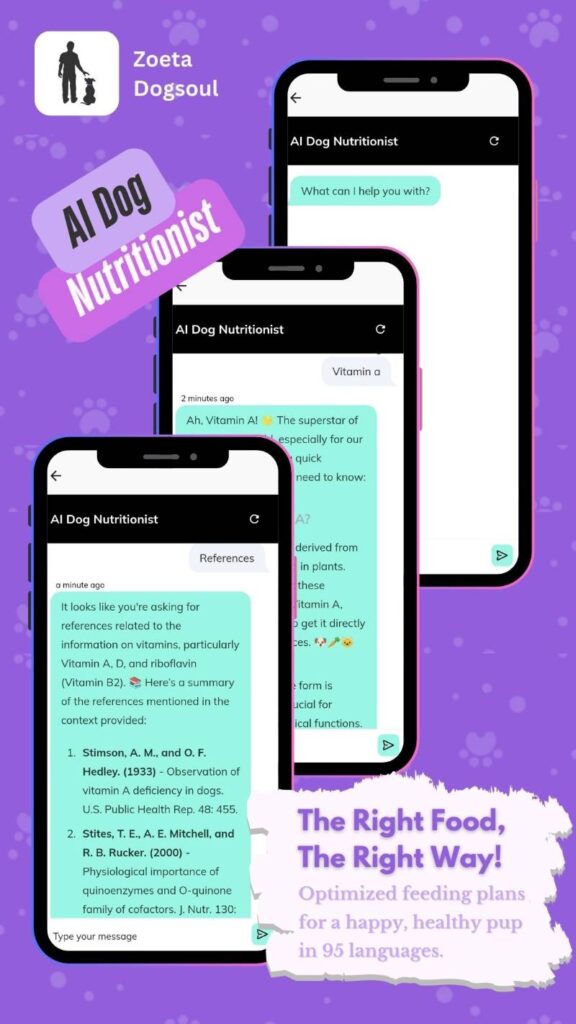
Fruits: Nature’s Sweet Treats
Fruits offer dogs natural sweetness along with valuable vitamins, minerals, and antioxidants that support immune function and overall health. However, not all fruits are created equal, and proper preparation ensures safety while maximizing benefits.
Blueberries stand out as superfood stars, packed with polyphenols that combat oxidative stress and support cognitive health. These tiny powerhouses are particularly beneficial for senior dogs, potentially slowing age-related mental decline. You can offer them fresh or frozen—many dogs enjoy frozen blueberries as cooling summer treats.
Apples provide excellent fiber and vitamins but require careful preparation. Always remove cores and seeds, which contain cyanogenic glycosides that can release cyanide when digested. Slice apples into appropriate sizes for your dog to prevent choking, and consider them an excellent low-calorie training treat alternative.
Bananas offer potassium and natural prebiotics that support digestive health. Their high sugar content means moderation is key—think of bananas as occasional treats rather than daily supplements. Many dogs enjoy frozen banana slices, which also provide teething relief for puppies.
Safe fruit options include:
- Watermelon (seedless, rind removed)
- Strawberries (hulls removed)
- Pears (core and seeds removed)
- Cantaloupe (seeds and rind removed)
- Mango (pit removed)
Vegetables: Fiber and Nutrient Powerhouses
Vegetables provide essential nutrients while adding satisfying crunch and volume to your dog’s diet without excessive calories—perfect for dogs needing weight management support. These plant-based additions offer vitamins, minerals, and phytonutrients that complement commercial dog food nicely.
Carrots emerge as the ultimate canine vegetable, offering beta-carotene for eye health, fiber for digestion, and satisfying crunch that many dogs crave. Raw carrots make excellent low-calorie treats that also help clean teeth, while cooked carrots become easier to digest and release more nutrients. For puppies, frozen carrot sticks can soothe teething discomfort.
Pumpkin deserves special recognition as a digestive aid extraordinaire. Its soluble fiber helps regulate both diarrhea and constipation, making it a go-to remedy for minor digestive upsets. Plain, canned pumpkin (not pie filling) offers convenience, while fresh cooked pumpkin provides similar benefits. Start with small amounts—typically a teaspoon for small dogs or a tablespoon for larger breeds.
Green beans provide filling fiber with minimal calories, making them ideal for weight management. Whether fresh, frozen, or canned (no salt added), green beans can replace up to 10% of your dog’s regular food to promote weight loss while maintaining satiation. Their crunchy texture also satisfies dogs who eat too quickly or constantly seek food.
Other beneficial vegetables include:
- Sweet potatoes (cooked, skin removed)
- Brussels sprouts (in moderation, may cause gas)
- Broccoli (small amounts, can cause gastric irritation in large quantities)
- Spinach (occasionally, high in oxalates)
- Zucchini (low calorie, high water content)
Grains and Carbohydrates: Energy Sources
While dogs don’t require grains, properly prepared carbohydrates can provide valuable energy and nutrients, particularly for active dogs or those with certain medical conditions. The key lies in choosing easily digestible options and preparing them appropriately.
Rice ranks as the most universally tolerated grain, with white rice offering easy digestibility during gastrointestinal upset and brown rice providing more fiber and nutrients for regular feeding. Many veterinarians recommend plain white rice mixed with boiled chicken as a bland diet for dogs recovering from digestive issues. Cook rice thoroughly and avoid adding seasonings or oils that might upset sensitive stomachs.
Oats deliver soluble fiber and B vitamins that support energy metabolism and coat health. Plain cooked oatmeal (made with water, not milk) can supplement your dog’s diet, particularly benefiting senior dogs who need easily digestible energy sources. The soluble fiber in oats also helps regulate blood sugar, making them appropriate for diabetic dogs under veterinary supervision.
Understanding Portion Control and Frequency
The 10% Rule: Maintaining Nutritional Balance
The fundamental principle of safely sharing human food with dogs revolves around the 10% rule: treats, table scraps, and human food additions should constitute no more than 10% of your dog’s daily caloric intake. This guideline ensures your dog’s carefully formulated commercial diet remains the nutritional foundation while allowing room for variety and special treats.
Calculating your dog’s needs starts with understanding their daily caloric requirements. A moderately active 30-pound dog typically needs about 900 calories daily, meaning human food treats should stay under 90 calories. This might equal one small apple, a tablespoon of peanut butter, or a few baby carrots—less than many owners realize.
Size-appropriate portioning prevents both choking hazards and caloric excess. What constitutes a small treat for a Great Dane could be an entire meal for a Chihuahua. Consider your dog’s size, age, activity level, and any health conditions when determining appropriate portions. Senior dogs often need fewer calories but might benefit from nutrient-dense additions like blueberries or fish oil.
Remember that calories from human food add up quickly, especially with multiple family members offering treats. Establish household rules about who feeds what and when, perhaps keeping a visible chart to track daily treat allowances. This prevents accidental overfeeding while ensuring everyone can participate in treating your furry friend.
Frequency and Timing Considerations
When you offer human foods matters almost as much as what you offer. Strategic timing can enhance benefits while minimizing potential problems, particularly for dogs with sensitive stomachs or specific health conditions.
Avoid feeding during or immediately after exercise when blood flow diverts from digestion to muscles. This particularly applies to large, deep-chested breeds prone to bloat. Wait at least an hour after vigorous activity before offering any food, including treats.
Consider using human foods strategically for training or behavior modification. High-value treats like small pieces of cooked chicken can motivate even stubborn dogs during training sessions. Reserve these special rewards for teaching new commands or reinforcing critical behaviors like recall.
Establish consistent treat times to prevent begging and maintain digestive regularity. Dogs thrive on routine, and knowing when to expect treats reduces anxiety and food-seeking behaviors. This predictability also helps you monitor intake and notice any adverse reactions to new foods.
Breed-Specific Food Sensitivities: Understanding Your Dog’s Genetic Predispositions
Your dog’s breed isn’t just about appearance and temperament—it profoundly influences how they process and react to different foods. Centuries of selective breeding have created distinct metabolic patterns, digestive sensitivities, and health predispositions that directly impact what human foods your specific dog can safely enjoy. Understanding these breed-specific vulnerabilities transforms you from a careful dog owner into an informed advocate for your pet’s unique nutritional needs.
Let’s explore how your dog’s genetic heritage shapes their relationship with human food, because what nourishes a robust Labrador might send a delicate Yorkie to the emergency clinic. This knowledge empowers you to make personalized decisions that honor your dog’s breed-specific requirements while still enjoying the bonding experience of safe food sharing.
Small Breeds: Big Risks in Tiny Bodies
Small and toy breeds—including Chihuahuas, Yorkshire Terriers, Maltese, and Pomeranians—face unique challenges when consuming human foods. Their miniature size means toxic doses are reached frighteningly quickly, while their fast metabolisms can cause blood sugar crashes that larger dogs might never experience.
Hypoglycemia represents a constant threat for these tiny companions. Missing even one meal can trigger dangerous blood sugar drops, and inappropriate human foods can destabilize their delicate glucose balance. You might notice your small dog becoming lethargic, shaky, or even experiencing seizures if blood sugar plummets. High-sugar human foods might seem helpful but actually cause rebound hypoglycemia—a dangerous spike followed by an even more dangerous crash.
Pancreatitis susceptibility runs especially high in breeds like Miniature Schnauzers and Yorkshire Terriers. These breeds possess genetic variants that affect fat metabolism, making even small amounts of fatty human foods potentially catastrophic. That single piece of bacon or buttered toast that a German Shepherd might handle could trigger life-threatening pancreatic inflammation in your Yorkie. Their pancreatic sensitivity means you must be extraordinarily vigilant about fat content in any shared foods.
Dental overcrowding and food retention plague many small breeds, creating bacterial breeding grounds when human food particles lodge between cramped teeth. Sticky or starchy human foods compound this problem, accelerating dental disease that’s already prevalent in these breeds. If you share human foods with small breeds, choose options that don’t stick to teeth, and always follow with dental care routines.
Physical challenges also affect food sharing—their tiny throats make choking hazards of foods other dogs handle easily. Always cut human foods into pieces smaller than you think necessary, and supervise consumption carefully. What seems like appropriate sizing for a “dog” might be dangerously large for your four-pound Chihuahua.
Brachycephalic Breeds: When Breathing Affects Eating
Flat-faced breeds—Bulldogs, Pugs, French Bulldogs, Boston Terriers, and Shih Tzus—bring special considerations to human food sharing that extend beyond simple toxicity concerns. Their compressed airways and modified skull structure create unique challenges that affect how they consume and digest any food, including human offerings.
Aspiration risk elevates dramatically in these breeds due to their anatomical structure. The same shortened airways that cause snoring and breathing difficulties also increase chances of food or liquid entering the lungs instead of the stomach. Liquid-consistency human foods pose particular dangers—even something as seemingly harmless as milk or broth can trigger aspiration pneumonia if inhaled during their characteristic gulping consumption style.
Regurgitation and vomiting occur more frequently in brachycephalic breeds, making rich or unfamiliar human foods especially problematic. Their tendency toward gastrointestinal sensitivity means new foods should be introduced even more gradually than with other breeds. You might notice your Frenchie handles their regular diet fine but reacts violently to human foods that other dogs tolerate well.
Temperature regulation through panting becomes compromised when these breeds eat, especially warm foods. Their inefficient cooling system means they can overheat while eating, particularly if excited about special treats. Always let hot human foods cool completely before offering, and avoid feeding during hot weather or after exercise when their breathing is already labored.
Consider presentation methods that slow consumption and reduce gulping. Spread soft human foods thinly on lick mats, freeze appropriate options in Kong toys, or hand-feed tiny pieces to control pace. These strategies reduce both choking and aspiration risks while allowing safe enjoyment of approved human foods.
Deep-Chested Breeds: The Bloat Factor
Large, deep-chested breeds—including Great Danes, German Shepherds, Standard Poodles, Dobermans, and Irish Setters—face a terrifying condition called gastric dilatation-volvulus (GDV) or bloat. This life-threatening emergency, where the stomach fills with gas and potentially rotates, has strong dietary connections that affect human food sharing decisions.
Timing becomes absolutely critical for these breeds. Never offer human foods—or any food—immediately before or after exercise. That excited post-walk treat could trigger a fatal cascade of events. Wait at least one hour after exercise before feeding anything, and prevent activity for at least an hour after eating. This restriction might seem excessive, but GDV’s mortality rate demands extreme caution.
Volume and consistency matter enormously. Large amounts of anything, even safe human foods, can trigger bloat. These breeds should receive human foods in small, measured portions rather than generous servings. Avoid foods that create gas (like cruciferous vegetables) or cause excessive drinking afterward (salty items). Even safe vegetables like broccoli or cabbage pose increased risks for these breeds.
Eating speed influences bloat risk, and human foods often trigger excited, rapid consumption. If your deep-chested dog gets particularly enthusiastic about human food treats, implement strategies to slow them down. Use puzzle feeders for appropriate items, freeze softer foods to extend consumption time, or hand-feed piece by piece to control pace.
Stress around eating also contributes to bloat risk. If your German Shepherd becomes anxious or competitive when human foods appear—perhaps due to multi-pet dynamics—consider offering these treats in a calm, isolated environment. The combination of stress, excitement, and rapid eating creates a perfect storm for GDV development.
Breeds Prone to Allergies and Sensitivities
Certain breeds display heightened tendencies toward food allergies and intolerances that complicate human food sharing. Bulldogs, Boxers, Golden Retrievers, Labrador Retrievers, West Highland White Terriers, and German Shepherds top this list, often developing sensitivities to proteins and other common ingredients.
Protein reactions manifest differently than true toxicities but can cause significant suffering. Your allergic dog might develop itchy skin, chronic ear infections, gastrointestinal upset, or hot spots after consuming trigger foods. Common human protein sources like beef, chicken, or eggs—normally safe for dogs—become problematic for allergic individuals. If your dog has known protein sensitivities, carefully evaluate any human meats or eggs before sharing.
Novel protein advantages mean that allergic dogs might actually benefit from certain unusual human foods. Venison, rabbit, or duck from your table might provide variety for dogs limited to prescription diets. However, preparation remains crucial—seasonings or cooking methods that add other proteins (like butter or chicken broth) contaminate otherwise suitable options.
The elimination diet challenge becomes more complex when human foods enter the picture. If you’re working with your veterinarian to identify allergens through dietary trials, any human food sharing can invalidate months of careful testing. During elimination diet periods, resist all human food sharing, no matter how safe the food might generally be.
Keep detailed food diaries if your breed tends toward allergies. Document everything your dog consumes, including human foods, treats, and even flavored medications. When allergic reactions occur, these records prove invaluable for identifying triggers that might not be immediately obvious.
Northern and Primitive Breeds: Ancient Digestion Patterns
Siberian Huskies, Alaskan Malamutes, Shiba Inus, and other primitive breeds retain digestive characteristics closer to their wolf ancestors, affecting their relationship with modern human foods. These breeds often process certain foods differently than more recently developed breeds, requiring special consideration.
Zinc absorption issues particularly affect Northern breeds, with Huskies and Malamutes showing higher rates of zinc-responsive dermatosis. Human foods high in calcium or phytates can interfere with zinc absorption, worsening this tendency. Dairy products, whole grains, and legumes—safe for many dogs—might contribute to skin problems in these breeds. If you share human foods with Northern breeds, monitor for skin changes and consider zinc supplementation under veterinary guidance.
Efficient metabolism means easy weight gain despite these breeds’ athletic appearance. Huskies evolved to survive on relatively little food in harsh conditions, making their metabolism extraordinarily efficient. Human foods that other active breeds burn off quickly can cause rapid weight gain in Northern breeds. That piece of cheese or peanut butter might represent a more significant caloric load for your Husky than for similarly-sized but metabolically different breeds.
Higher prey drive affects food behavior in ways that impact safety around human foods. These breeds might guard high-value human foods more intensely or gulp them without chewing, increasing choking risks. Their strong resource-guarding instincts, closer to wild ancestors, mean human food sharing can trigger unexpected aggressive responses, especially in multi-pet households.
Traditional diets of these breeds’ ancestors influence modern sensitivities. Arctic breeds historically consumed high-protein, high-fat diets with minimal carbohydrates. Modern human foods heavy in grains or vegetables might cause more digestive upset in these breeds than in others adapted to agricultural diets over longer periods.
Herding Breeds: The MDR1 Gene Factor
Collies, Australian Shepherds, Shetland Sheepdogs, and related herding breeds carry a genetic mutation (MDR1) that affects how they process certain substances. While primarily concerning medications, this mutation influences how these breeds handle various compounds that might appear in human foods.
Toxin sensitivity increases dramatically in MDR1-affected dogs. They cannot efficiently remove certain substances from their brains, causing neurological effects at doses other dogs tolerate. While the mutation primarily affects drugs, some natural compounds in human foods might pose increased risks. Fermented foods, certain herbs, and foods containing natural pesticides deserve extra caution.
Neurological symptoms appear more readily when these breeds encounter problematic substances. You might notice disorientation, excessive drooling, tremors, or seizures at exposure levels that wouldn’t affect other breeds. This hypersensitivity means any human food causing mild neurological effects in normal dogs could prove severe for your Collie or Aussie.
Cascade effects complicate treatment if these breeds experience food toxicity. Many emergency treatments involve medications that MDR1-affected dogs cannot tolerate, limiting therapeutic options. Prevention becomes even more critical when treatment options are restricted. This reality should make you exceptionally cautious about human food sharing if your dog carries this mutation.
Consider genetic testing if you own herding breeds. Knowing your dog’s MDR1 status informs all dietary and medical decisions, including human food sharing. The small investment in testing could prevent life-threatening complications from seemingly innocent food choices.
Tempting. Risky. Vital.
Dogs digest differently. Shorter tracts, missing enzymes, and slower toxin clearance mean foods harmless to us can become dangerous for them. Understanding these biological limits is the first safeguard against accidental harm.
Gut health shapes behavior. What enters your dog’s stomach influences mood, learning, and resilience. Toxic or heavily processed foods disrupt gut bacteria, sparking anxiety, irritability, and reduced cognitive performance.



Chocolate tops the list. Rich in methylxanthines, even small amounts can overwhelm a dog’s system, especially in darker forms. Recognizing this danger transforms vigilance at the dinner table into lifesaving care.
Working and Sporting Breeds: High Energy, High Stakes
Labrador Retrievers, Golden Retrievers, German Shorthaired Pointers, and similar sporting breeds combine high energy needs with surprising dietary sensitivities. Their athletic requirements don’t translate to dietary invincibility—in fact, their enthusiasm often creates unique risks.
Indiscriminate eating habits make these breeds particularly vulnerable to food toxicity. Your Lab’s “eat first, ask questions later” approach means they’re more likely to consume dangerous amounts of toxic foods before you can intervene. This tendency toward gluttony requires extra vigilance around human foods—they’ll often eat until physically unable to continue rather than self-regulating.
Exercise-induced sensitivities affect how these active breeds process foods. High activity levels can alter gut permeability, making them more reactive to foods consumed around exercise times. That post-run treat might cause upset that the same food wouldn’t trigger at rest. Time human food offerings carefully around your sporting dog’s exercise schedule.
Joint stress from excess weight becomes particularly problematic in breeds already prone to hip and elbow dysplasia. Even small amounts of excess weight from too many human food treats exponentially increase joint stress in these active breeds. The combination of genetic predisposition and weight gain can accelerate arthritis development, turning your young athlete into a prematurely aged dog.
Balance their higher caloric needs with the reality that most sporting breed pets don’t actually work at hunting-dog intensity. Your household Golden Retriever doesn’t need the 4,000 calories their field-trial cousins burn. Adjust human food sharing accordingly, recognizing that breed history doesn’t necessarily reflect current lifestyle.
Special Considerations for Different Life Stages
Puppies: Building Healthy Habits Early
Puppyhood represents a critical window for establishing healthy relationships with food, including appropriate human food treats. Young dogs’ developing digestive systems require extra caution, but thoughtful introduction of safe human foods can prevent pickiness and promote adventurous eating habits.
Start slowly and systematically when introducing human foods to puppies. Their immature digestive systems react more sensitively to dietary changes, so introduce one new food at a time, waiting several days before adding another. This approach helps identify any intolerances or allergies while their immune systems are still developing.
Focus on nutrient density rather than quantity. Puppies need concentrated nutrition for rapid growth, so choose human food additions that pack nutritional punch—like small amounts of cooked egg for protein or pureed pumpkin for digestive health. Avoid filling their small stomachs with low-nutrient options that might displace essential puppy food.
Puppies also face unique risks from certain foods. Their small size means toxic doses are reached more quickly, and their tendency to gulp food increases choking risks. Cut all human foods into tiny, appropriate pieces and supervise consumption closely.
Adult Dogs: Maintaining Optimal Health
Adult dogs in their prime years often handle varied diets well, but this flexibility shouldn’t encourage carelessness. This life stage offers opportunities to use human foods strategically for health maintenance and disease prevention.
Antioxidant-rich foods like blueberries and carrots support cellular health during peak years, potentially reducing cancer risks and supporting immune function. Regular inclusion of omega-3 rich fish can maintain cognitive sharpness and joint health before age-related decline begins.
Weight management becomes crucial during adulthood when metabolism stabilizes but activity levels might decrease. Using low-calorie vegetables as treat replacements helps prevent the gradual weight gain that predisposes dogs to numerous health problems. Green beans, cucumber slices, and air-popped popcorn (unsalted, unbuttered) satisfy treating desires without caloric excess.
Consider your adult dog’s breed-specific tendencies. Breeds prone to pancreatitis need stricter fat limitation, while active working breeds might benefit from additional protein sources. Tailor human food choices to complement, not complicate, breed-specific health considerations.
Senior Dogs: Nutritional Support for Golden Years
Senior dogs often benefit most from carefully chosen human food additions that address age-related changes while accommodating decreased appetite or dental issues. The right selections can significantly impact quality of life during these precious years.
Cognitive support foods become increasingly important as dogs age. Blueberries’ anthocyanins may slow cognitive decline, while fish oil’s DHA supports brain health. Some senior dogs show improved mental clarity when these foods supplement their regular diet, though changes should always be gradual and monitored.
Digestive sensitivity often increases with age, making easily digestible options crucial. Well-cooked sweet potatoes provide gentle fiber and beta-carotene, while bone broth (unsalted, onion-free) offers hydration and joint-supporting nutrients in an appealing, easy-to-consume form.
Dental considerations might necessitate softer options. Pureed vegetables, mashed bananas, or finely chopped cooked meats accommodate dental disease or tooth loss while maintaining nutritional variety. These modifications ensure senior dogs don’t miss out on beneficial human foods due to mechanical eating difficulties 🐾
Medical Conditions and Dietary Restrictions
Diabetes and Blood Sugar Management
Diabetic dogs require meticulous dietary management where even small amounts of inappropriate human foods can destabilize blood sugar control. Understanding glycemic impacts helps you make safe sharing decisions.
Low glycemic vegetables like green beans, broccoli, and cauliflower provide variety without spiking blood sugar. These foods’ fiber content actually helps regulate glucose absorption, making them potentially beneficial additions when portioned appropriately.
Avoid all fruits and starchy vegetables which can cause dangerous glucose spikes. Even seemingly healthy options like apples or carrots contain enough natural sugars to disrupt insulin management. If you must offer treats, stick to protein sources or non-starchy vegetables.
Timing becomes critical for diabetic dogs. Human food treats should align with insulin administration schedules and regular meals. Consult your veterinarian about incorporating any human foods, as individual insulin protocols vary significantly.
Pancreatitis: The Fat Connection
Dogs with pancreatitis history face lifelong dietary restrictions where fat content becomes the primary concern. Even single high-fat incidents can trigger painful, potentially life-threatening flare-ups.
Absolute fat avoidance means no table scraps from fatty meals, no poultry skin, no cheese, and no nuts. What seems like a small indulgence—a piece of bacon or buttered toast—can land susceptible dogs in emergency care.
Safe options remain limited but not non-existent. Air-popped popcorn (plain), rice cakes, and raw vegetables provide crunch without fat. Lean proteins like skinless chicken breast or white fish, thoroughly cooked and unseasoned, offer occasional variety when veterinarian-approved.
Monitor for subtle signs of pancreatic inflammation: hunched posture, appetite loss, or unusual lethargy following food consumption. These early warnings allow intervention before full-blown pancreatitis develops.
Kidney Disease: Phosphorus and Protein Considerations
Kidney disease demands careful attention to phosphorus and protein levels, complicating human food sharing. Many otherwise healthy options become problematic for dogs with compromised kidney function.
Phosphorus restriction eliminates many proteins including most meats and dairy products. Even some vegetables like peas contain concerning phosphorus levels. Work closely with your veterinarian to identify appropriate options within your dog’s specific restrictions.
Omega-3 fatty acids from fish oil may actually benefit kidney patients by reducing inflammation and slowing disease progression. However, whole fish might provide excessive phosphorus, making supplementation preferable to food sources.
Focus on maintaining appetite and quality of life while adhering to restrictions. Sometimes, tiny amounts of favorite foods that technically exceed ideal parameters are permitted to encourage eating in dogs with poor appetite due to kidney disease.

The Psychology of Begging and Food Sharing
Understanding Why Dogs Beg: It’s Not Just About Hunger
Those soulful eyes watching every bite you take tell a story far more complex than simple hunger. Your dog’s begging behavior stems from intricate psychological and evolutionary factors that have nothing to do with whether their bowl sits empty or full. Understanding these deeper motivations helps you respond appropriately without compromising their health through inappropriate food sharing.
Pack bonding drives much begging behavior. In wild canid societies, food sharing reinforces social bonds and hierarchies. Your dog’s attempts to share your meal represent their desire for inclusion in your “pack activities.” When you eat, you’re engaging in a fundamental pack behavior, and your dog’s exclusion from this ritual can trigger anxiety that manifests as persistent begging. They’re not necessarily hungry—they’re seeking connection and inclusion in what they perceive as a critical social activity.
Opportunistic instincts inherited from their ancestors compel dogs to seek food whenever available, regardless of satiation. This evolutionary programming helped wild canids survive feast-or-famine conditions. Your well-fed Golden Retriever begging for your sandwich operates on the same ancient software that told their ancestors to never pass up a caloric opportunity. Modern abundance hasn’t erased millennia of scarcity-based programming.
Learned behavior reinforcement often intensifies begging beyond natural inclinations. Every time begging succeeded—even once—your dog’s brain registered a powerful reward pathway. That single french fry you shared “just this once” created a gambling-like variable reinforcement schedule. Your dog now believes persistence might randomly pay off, making the behavior extraordinarily resistant to extinction. They’re not being stubborn; they’re following what their experience has taught them works.
Anxiety and attention-seeking frequently masquerade as food desire. Dogs who beg might actually seek the interaction, eye contact, and attention that begging provides rather than the food itself. For anxious dogs, the predictable routine of mealtimes and the focused attention during begging provide comfort and structure. Distinguishing attention-seeking from genuine food motivation helps you address the real need without resorting to food rewards.
Breaking the Begging Cycle Without Human Food Rewards
Ending established begging behaviors requires consistency, patience, and strategic replacement of the unwanted behavior with acceptable alternatives. The goal isn’t to damage your bond but to redirect your dog’s meal-time expectations into healthier patterns that don’t involve human food.
The extinction burst phenomenon means begging typically intensifies before improving. When you stop reinforcing begging, your dog will initially try harder—whining louder, pawing more insistently, perhaps even escalating to barking or jumping. This temporary increase, called an extinction burst, indicates the training is working, not failing. Weather this storm with absolute consistency, knowing improvement lies just beyond this challenging phase.
Strategic environmental management prevents begging opportunities while new habits form. Consider these approaches:
- Feed your dog during your mealtimes, so they’re occupied with their own food
- Use baby gates to create physical separation without isolation
- Establish a “place” command where your dog relaxes on a mat during meals
- Rotate challenging puzzle toys reserved exclusively for your mealtimes
Replacement behaviors provide acceptable alternatives to begging. Teach your dog that lying quietly on their bed during meals earns rewards (attention, play, or their own special treats—not your food). This isn’t about punishment but about showing them a more successful strategy for getting what they want. Start by rewarding tiny increments of calm behavior, gradually extending the duration required for rewards.
Consistency across all household members proves absolutely critical. A single person occasionally reinforcing begging undermines everyone’s efforts. Hold a family meeting to establish unified rules and responses. Create a visible chart tracking everyone’s consistency, making it a team effort rather than individual responsibility. Children especially need clear, simple rules they can follow without exception.
Creating Healthy Treat Rituals That Satisfy Without Sharing
Developing structured treat rituals provides the bonding and variety your dog craves without resorting to human food sharing. These rituals satisfy their psychological needs while maintaining nutritional boundaries and safety.
Designated treat times separate from human meals create anticipation and structure. Perhaps your dog receives a special Kong toy with frozen dog-safe ingredients every evening while you prepare dinner. This ritual provides something to anticipate without connecting it to your food consumption. The predictability reduces anxiety while the special nature maintains excitement.
Interactive treat delivery methods transform treating from passive consumption to engaging activities. Hide their regular kibble around the house for “hunting,” use puzzle feeders that require problem-solving, or practice training commands with their standard treats as rewards. These methods provide mental stimulation that often satisfies dogs more than the treats themselves.
“Cooking” special dog meals creates inclusion without sharing human food. While you prepare your dinner, “prepare” theirs too—arrange their regular food specially, add warm water or low-sodium broth to create “gravy,” or present it in a special dish reserved for these occasions. Your dog experiences participation in meal preparation without consuming inappropriate foods.
Establishing post-meal rituals redirects focus from your food to predictable, enjoyable activities. After you finish eating, perhaps your dog knows it’s time for their evening walk, favorite game, or grooming session. This anticipation of post-meal activities reduces meal-time begging because they’re waiting for what comes after, not trying to participate in the meal itself.
Managing Multi-Pet Households With Different Dietary Needs
When one pet requires dietary restrictions while others don’t, managing human food sharing becomes exponentially more complex. Different pets might have vastly different tolerances, creating situations where safe sharing for one could endanger another.
Separate feeding stations prevent dangerous cross-contamination. If you share human food with one pet but not another due to health restrictions, physical separation during these times becomes essential. Use different rooms, baby gates, or crates to ensure the restricted pet cannot access foods that could harm them. This isn’t punishment—it’s protection presented positively.
Visual cues help family members remember restrictions. Consider collar tags or bandanas indicating dietary restrictions: red for “no human food,” yellow for “ask first,” green for “approved treats only.” These visual reminders prevent well-meaning family members or guests from accidentally sharing dangerous foods with restricted pets.
Fairness perceptions require careful management. Dogs absolutely notice when others receive treats they don’t, potentially causing jealousy, resource guarding, or depression. Balance this by ensuring restricted pets receive special attention or appropriate alternatives when others get human food treats. Perhaps they get extra playtime, special toys, or their own safe treats during these moments.
Medical transparency with all household members ensures everyone understands why restrictions exist. Don’t just say “Fluffy can’t have people food”—explain that Fluffy’s pancreatitis means even one piece of bacon could cause life-threatening illness. When people understand the serious medical consequences, compliance improves dramatically. Consider posting simplified medical information where it’s easily referenced.
Scheduled rotation systems can work for households where different pets have different safe foods. Monday might be Max’s turn for a special treat while Bella gets extra play time, then reverse on Tuesday. This systematic approach ensures fairness while maintaining safety, though it requires significant organization and consistency.
Addressing Food Aggression Around Human Food
Food aggression specifically triggered by human food presents unique challenges because the high value dogs place on these “special” items can intensify resource guarding behaviors. This aggression endangers both humans and other pets, requiring careful, professional approach to modification.
Understanding the escalation pattern helps predict and prevent aggressive incidents. Dogs typically progress through predictable warning signs: body stiffening, hovering over food, faster eating, growling, showing teeth, snapping, and finally biting. Human foods often accelerate this progression because their perceived value triggers more intense guarding. Recognizing early signs allows intervention before aggression escalates.
Never punish growling around human food, as this removes your warning system without addressing underlying anxiety. Punishment might suppress the growl but not the emotion driving it, potentially creating a dog who bites without warning. Instead, respect the growl as communication and address the root cause—the dog’s fear that valuable resources will be taken.
Desensitization requires professional guidance when human food triggers aggression. Working with a certified behaviorist or veterinary behaviorist, you’ll gradually change your dog’s emotional response to people approaching while they have valuable items. This process, using counter-conditioning and desensitization, takes months of consistent work and should never be attempted without professional supervision.
Management remains paramount during behavior modification. Never allow situations where aggression might occur:
- Feed aggressive dogs separately, in closed rooms or crates
- Never give human food if children are present
- Avoid high-value human foods entirely until behavior improves
- Use “trading” protocols where dogs learn to exchange items for better rewards
- Maintain distance when any food is present
The “nothing in life is free” protocol establishes clear resource control without confrontation. Dogs must perform commands (sit, down, stay) before receiving anything valuable, including attention, toys, or food. This protocol reduces resource-related anxiety by creating predictable patterns for resource access. However, implement this under professional guidance if aggression already exists.
Remember that food aggression around human food often indicates deeper anxiety issues that require comprehensive behavior modification. The temporary pleasure of sharing your sandwich never justifies the risk of escalating aggressive behaviors that could ultimately threaten your dog’s life if they bite someone 🐾
Creating a Safe Feeding Environment
Storage and Preparation Guidelines
Proper storage and preparation of human foods intended for dogs prevents contamination and ensures maximum nutritional benefit while minimizing risks. Your kitchen habits directly impact your dog’s food safety.
Separate storage prevents cross-contamination between dog-safe and toxic foods. Consider designating a specific container or shelf area for dog-appropriate human foods, clearly labeled to prevent family members from accidentally offering dangerous items. This organization becomes especially important in households with multiple caregivers.
Preparation surfaces and tools should be thoroughly cleaned when switching between human and dog food prep. Onion or garlic residue on cutting boards can contaminate otherwise safe foods. Consider maintaining separate cutting boards or thoroughly washing between uses.
Temperature control matters for perishable items. Cooked meats intended for dogs should follow the same food safety guidelines as human food—refrigerate within two hours, use within 3-4 days, or freeze for longer storage. Bacterial growth affects dogs just as it does humans, potentially causing severe gastrointestinal illness.
Label and date all prepared dog treats or meals, especially if freezing portions. This prevents offering spoiled food and helps track what your dog has consumed if adverse reactions occur.
Training Family Members and Guests
Creating a safe feeding environment extends beyond your own actions to encompass everyone who interacts with your dog. Clear communication and consistent rules prevent well-meaning but potentially dangerous feeding behaviors.
Establish household rules that everyone understands and follows. Post a visible list of toxic foods on your refrigerator, and ensure all family members know the “absolutely never” items. Include photos for younger children who might not read well yet.
Guest education requires diplomatic firmness. Many visitors assume all dogs can eat what their dogs eat, or worse, believe dogs can eat anything humans can. Politely but clearly explain your dog’s dietary restrictions, perhaps offering approved treats guests can give instead of refusing their gestures entirely.
Children need special guidance about appropriate feeding. Teach them to ask permission before sharing any food, and explain in age-appropriate terms why some foods can make dogs very sick. Consider creating a special container of dog-safe treats children can access independently, fostering responsibility while maintaining safety.
Emergency Response: When Prevention Fails
Recognizing Poisoning Symptoms
Despite best prevention efforts, accidents happen. Recognizing poisoning symptoms quickly can mean the difference between successful treatment and tragedy. Familiarize yourself with both immediate and delayed signs of toxicity.
Immediate symptoms typically appear within 2-4 hours and include:
- Vomiting or retching
- Excessive drooling
- Diarrhea
- Agitation or restlessness
- Rapid breathing or panting
- Dilated pupils
Delayed symptoms might not appear for 12-72 hours:
- Lethargy or weakness
- Loss of appetite
- Increased or decreased urination
- Jaundice (yellow gums, eyes, skin)
- Seizures or tremors
- Collapse or unconsciousness
Document everything you observe, including timing and progression. This information proves invaluable for veterinary diagnosis and treatment planning. Take photos of vomit or diarrhea if possible—while unpleasant, these provide diagnostic clues about the toxin involved.
Immediate Actions to Take
Your response in the first minutes after discovering your dog consumed something toxic can significantly impact outcomes. However, avoid panic-driven mistakes that might worsen the situation.
Never induce vomiting without veterinary guidance. Some substances cause more damage coming back up, and certain conditions make vomiting dangerous. Caustic substances, petroleum products, or sharp objects should remain in the stomach until professional removal.
Collect evidence including packaging, remaining food, or vomit samples. Bring these to your veterinary appointment—they help identify toxins and determine treatment protocols.
If instructed to induce vomiting, use only veterinarian-recommended methods. Three percent hydrogen peroxide, given orally at one teaspoon per 10 pounds of body weight, typically induces vomiting within 15 minutes. Never exceed three tablespoons total, regardless of dog size.
Working with Your Veterinarian
Successful treatment depends on honest, thorough communication with your veterinary team. Provide complete information even if embarrassing or incriminating—judgment has no place when your dog’s life hangs in balance.
Bring everything relevant to the appointment:
- The toxic substance or its packaging
- Photos of vomit or symptoms
- Timeline of events
- List of all foods consumed in past 72 hours
- Your dog’s complete medical history
Understand treatment options which might include:
- Induced vomiting or gastric lavage
- Activated charcoal administration
- IV fluid therapy
- Specific antidotes when available
- Supportive care including anti-nausea medication
- Blood work monitoring
- Hospitalization for observation
Follow-up care is crucial even when your dog seems recovered. Some toxins cause delayed organ damage requiring ongoing monitoring. Attend all follow-up appointments and report any concerning changes, however minor they seem.
Frequently Asked Questions
“Can My Dog Have Just a Little?”
This common question reflects our desire to share with our beloved companions, but the answer depends entirely on what “it” is and your individual dog’s health status. For toxic foods like chocolate, grapes, or xylitol, “just a little” could still cause serious harm—there’s no safe amount of truly toxic substances.
For non-toxic but potentially problematic foods like fatty items, “just a little” might seem harmless for healthy dogs but could trigger pancreatitis in susceptible individuals. You know your dog’s health history best, but when in doubt, err on the side of caution. The momentary joy of sharing isn’t worth potential emergency visits.
Instead of focusing on human foods your dog can’t have, celebrate the many safe options available. That “just a little” desire can be satisfied with dog-appropriate choices that let you share without worry.
“My Dog Ate Something Bad—Now What?”
First, don’t panic but do act quickly. Assess the situation: What was consumed? How much? When? Is your dog showing symptoms? This information guides your next steps and helps professionals provide appropriate advice.
Contact your veterinarian immediately, even if your dog seems fine. Some toxins have delayed effects, and early intervention improves outcomes. If your regular vet isn’t available, call an emergency clinic or pet poison hotline. Never adopt a “wait and see” approach with potential toxins.
Keep your dog calm and comfortable while awaiting instructions. Prevent access to water if instructed (some toxins absorb faster with water). Don’t give any home remedies unless specifically directed by a veterinary professional. Your quick, appropriate response can make all the difference.
“Are Organic or Natural Foods Safer?”
While organic foods avoid synthetic pesticides and additives, “organic” doesn’t equal “dog-safe.” Organic chocolate remains toxic, organic grapes still cause kidney failure, and organic onions still damage red blood cells. The toxic compounds in these foods occur naturally, unaffected by growing methods.
That said, choosing organic versions of dog-safe foods might reduce exposure to pesticide residues and other chemicals that could accumulate over time. This particularly matters for foods dogs eat regularly rather than occasionally. If you’re sharing produce with your dog frequently, organic options minimize additional chemical exposure.
Focus first on choosing dog-safe foods, then consider organic options within your budget. The most important factor remains selecting appropriate foods for your dog’s species, not the farming methods used to produce them.
Conclusion: Building a Lifetime of Safe, Joyful Sharing
Understanding which human foods your dog can and cannot eat empowers you to make informed decisions that enhance their life while protecting their health. This knowledge transforms mealtime from a minefield of potential dangers into an opportunity for safe, enriching variety that strengthens your bond.
Remember that every dog is unique—what works wonderfully for your neighbor’s Golden Retriever might upset your Yorkie’s sensitive stomach. Start slowly when introducing any new food, monitor reactions carefully, and maintain open communication with your veterinarian about your dog’s diet. Your observant, thoughtful approach to food sharing reflects the deep love you have for your four-legged family member.
The journey toward safe food sharing doesn’t end with memorizing lists of good and bad foods. It continues through daily choices, careful observation, and ongoing education as new research emerges. By staying informed and vigilant, you ensure that sharing special moments and occasional treats with your dog remains a source of joy rather than worry.
Your commitment to understanding canine nutrition and food safety makes you an exceptional pet parent. That wagging tail and those bright eyes thanking you for a safe, delicious treat? That’s your reward for taking the time to learn what truly nourishes your faithful companion. Here’s to many years of healthy, happy sharing with your beloved dog 🧡

